Archives
Categories
About us

Jallikattu
Preserving traditions while embracing technology.
- Jallikattu – India’s first Indigenous Farmer Producer Company with the primary objective of helping rural, trivial, and landless farmers in India!
- Jallikattu is the pioneer in virtual onion and cow farming with a well-structured and efficient farming ecosystem. We enable individuals who are passionate about agriculture to pursue their interests from the comfort of their homes.
- We collaborate with the Government of India, financial institutions, civil society, research agencies, and various private organizations to empower farmers. We enable them to collectively interact and learn from each other in order to make informed decisions.
Who are we?
- Are you passionate about cattle rearing and agriculture but do not know where to start.
- At Jallikattu, we are breaking barriers and connecting people from across the globe to buy Indian cattle breeds! In this digital age, when everything around us is online, why can’t agriculture and cattle rearing be? Jallikattu is digitizing our timeless tradition of farming through technology.
- Jallikattu is not just a company - It’s a movement. We aim to uplift rural communities across India. We strive to empower farmers and ensure their sustainable income and growth!

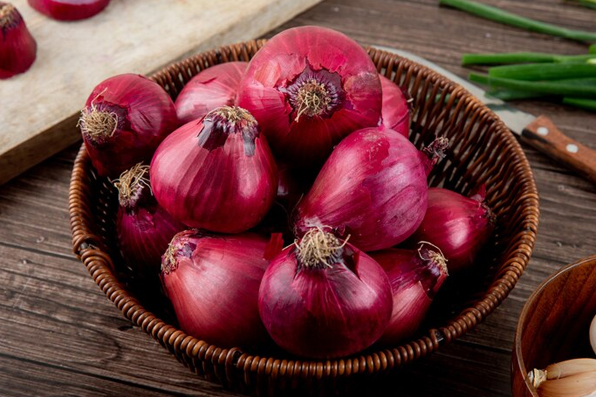
What do we do?
- Jallikattu is your all-in-one platform for purchasing indigenous cattle virtually in India! You only have to select your preferred cattle from our wide variety of breeds, and we will take care of everything else. From feeding to healthcare to breeding, our expert teams will ensure that your cattle receive the best care while maximizing productivity.
- We also sell onion storage space virtually to help farmers get maximum profit from their yield. Our temperature and humidity-controlled onion warehouses will eliminate the risk of post-harvest losses. You can sell it yourself or make use of our extensive marketing network to sell your onions when the demand is high.
Our Vision :
- Build a thriving and sustainable agricultural sector by promoting and supporting the farming community
- Assisting the shareholders in improving productivity through investing in onion and cow farming
- With the support of the Indian Government, financial institutions, civil society, research agencies, and other private organizations, we pave the way for a flourishing future in agriculture.


Our Mission :
- Empower farmers through technology
- Protect our native cattle breeds while optimizing dairy production
- Educate farmers and facilitate optimal management of cattle breeds
- Best place to invest in Onion storage spaces
- Enable farmers to get maximum returns on their yields
Our Aim :
- Enhance the livelihoods and reduce poverty of the small and trivial landless farmers in India.

Key Success Of Our Company
Mission
Our mission is to produce best quality, fast growing, heritably higher breeding stock, fresh goat meats to ease local villages to acquire better practice in goat rearing for their livelihood. Also, we are the right place for the business people to do investment in goat farming to get high returns.
Vision
Our Vision is to build a thriving and sustainable agriculture sector through promoting and supporting shareholders. We assists to improve productivity through investing in onion, cow, goat farming and know their value of returns for their produces by cumulative marketing network supported by India Government, financial institutions, civil society, Research Agencies and other private sect.
Aim
The main aim of the JALLIKATTU Company is to enhance livelihoods and thus reduce poverty of the small and trivial landless farmers in certain INDIA.
Cows walk to the milking center to be milked. Typical herds are milked two or three times each day, depending on some factors including type of parlor used and management decisions.
Cows are moved from the free stall barn quietly around 30 minutes before being milked to reduce adrenaline production.
The holding area is where a group of cows stands to wait for their turn to be milked. At the rear of the holding area is a mechanical crowd gate, which moves forward as cows walk up a sloped floor to be milked. Most crowd gates sound a buzzer that signals to the cows the gate will move. Cows are easily trained to move forward when the buzzer sounds, so the gate does not actually push the cows forward.
Instead, they move and the gate follows close behind to prevent cows from going back to the barn before they have been milked
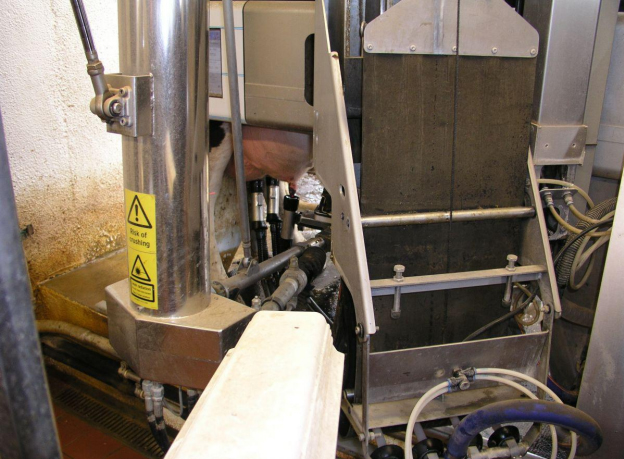
Milking Parlor

- Cows walk from the holding area into an available stall in the milking Parlor.
- Typical parlors have stalls arranged next to one another in a parallel, herringbone, or rotary configuration. The cows walk forward to fill up the available
- In some parlor configurations, a lowered gate in front of the cows keeps them in the proper position to be milked.
- A worker on a floor space next to and below the cows then walks to each cow and cleans the teats, usually by applying a special cleaner to the teats that removes dirt and kills bacteria followed by hand wiping the teats using a separate clean rag for each cow. The clean teats are then dried with separate clean paper towels for each cow.
- The initial wiping and drying of the teats stimulates the milk letdown response.
- Foremilk stripping is performed to remove several squirts of milk from each teat (and quarter of the cow’s udder).
- The milk is collected into a strip cup or ejected onto the floor and examined for clots or flakes in the milk that indicate clinical mastitis. If a cow has mastitis, it will not get milked here, and instead will be separated from the group after leaving the parlor and entering a special treatment barn.
- Sick cows get milked by hand in the treatment barn and the milk gets discarded. Foremilk stripping also removes milk from the udder that is highest in somatic cell count (SCC) from the teat ends where it collects, improving milk quality.
- If nothing out of the ordinary is noticed during foremilk stripping, the worker attaches the milking machine to the cow’s teats shortly after being cleaned and stripped, and the cow is automatically milked.
- The milking machine is typically attached to the teats one minute after preparation, and milking is usually completed within 5 to 7 minutes for each cow.
- After 5 minutes, milk flow usually slows to a level that causes the milking machine to automatically detach from the cow’s teats.
- The teats are then dipped in a post-milking germicidal teat dip to protect them from pathogens on the skin that could cause mastitis by entry through the milk canal, which stays open for up to an hour after milking.
- After all cows in the current group have finished milking, the gate opens in front of them and they are free to return to the barn through a return alley. Learn more about what cows do inside the barn in our Herd Management section.
- When the cows leave the parlor, they typically pass through a sorting gate. The sorting gate automatically separates cows which may have been flagged for veterinary care or other reasons.
- The cows that do not require further examination exit through the sorting gate to rejoin their group in the barn.
- After a group of cows has been … the milking parlor is meticulously cleaned to prepare for the next group.
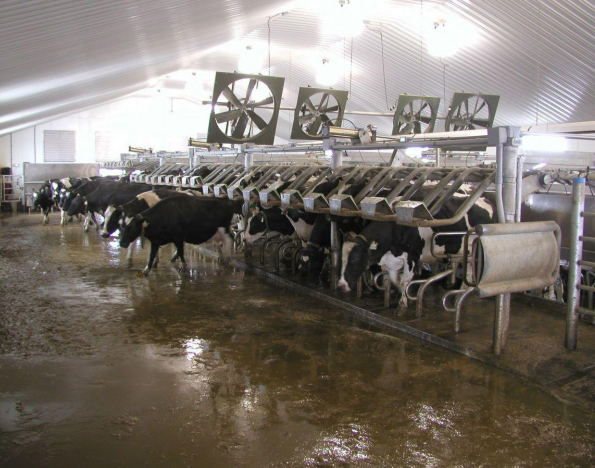
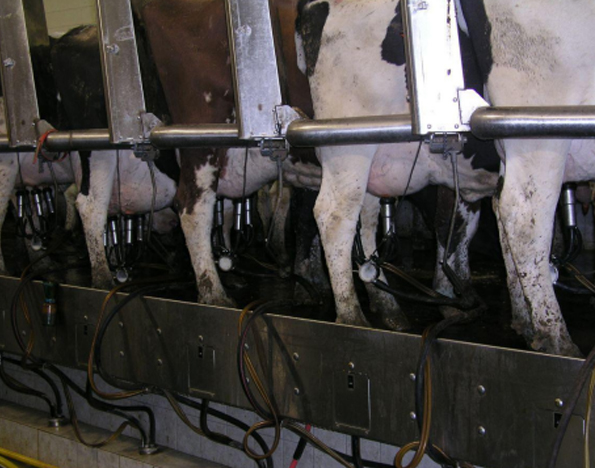
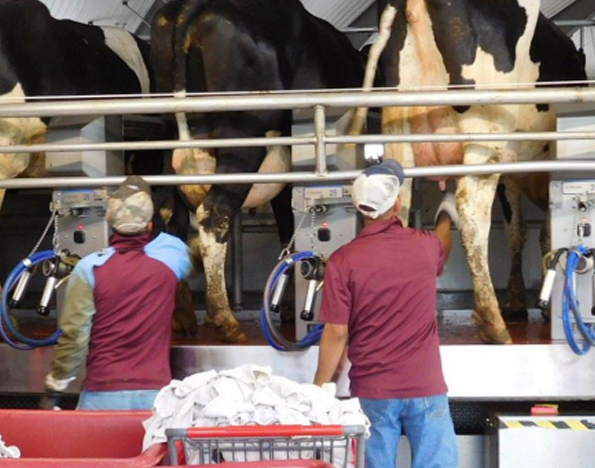
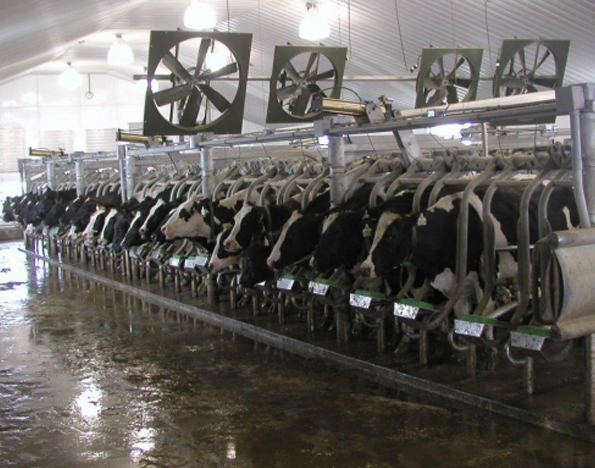
Robotic Milkers
- Robotic milking machines are becoming a popular alternative to the traditional milking parlor. These machines milk the cows when the cows want to be milked. The typical capacity for one milking unit is 50 to 70 cows.
- They reduce labor requirements by automating every step of the milking process: teat cleaning and preparation, milker attachment, milking, post treatment, and cow sorting upon exit.

| Cow Farming Plans | |||
| Cow | Share | Dollar | |
| Option 1 | 1 | 1 | $650 |
| Option 2 | 1 | 1 Share & 20 Cents Land | $5000 |
| Total Plan | 500 | 500*2 Cents | 500*5000=2500000 |
